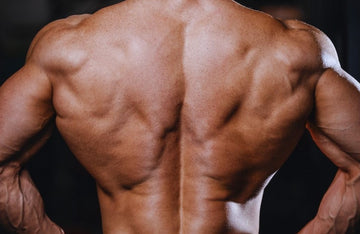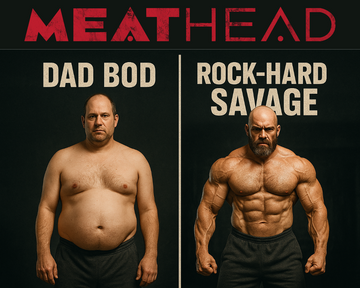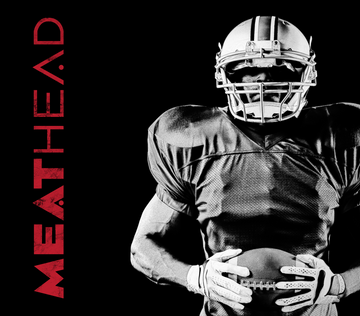Building that classic V-shape—wide shoulders, a broad upper back, and a narrow waist—is the ultimate aesthetic goal for many. It screams power, strength, and athleticism, but getting there requires hard work, discipline, and the right approach. You can’t just rely on random gym sessions. To truly sculpt a V-shaped upper body, you need to be strategic and relentless.
Here’s a no-nonsense guide on how to transform your physique into that V-taper you’ve always wanted.
1. Prioritize Shoulder and Lat Development
The key to creating a V-shaped physique lies in building width, primarily in your shoulders and upper back. These muscle groups define the broad top half of your body and create the optical illusion of a slimmer waist.
Shoulders (Delts) To broaden your shoulders, focus on all three deltoid heads (anterior, lateral, and posterior). Many lifters overemphasize the front delts, leading to imbalances. To achieve real width, hammer the lateral and rear delts just as hard, if not harder.
- Lateral Raises (DB or Cable): High-rep sets (15-20) to build lateral delts.
- Overhead Press (Barbell or DB): Go heavy for mass, focusing on full range of motion.
- Rear Delt Flys (DB or Machine): Strengthen the often-neglected rear delts to improve posture and balance out shoulder growth.
Lats Your lats are the foundation of your back’s width. Training them intensely will give you that iconic “winged” look.
- Pull-Ups/Chin-Ups: These should be your bread and butter. Aim for high volume, weighted if possible.
- Lat Pulldowns: Vary grip and hand positioning to hit your lats from multiple angles.
- Dumbbell or Barbell Rows: Focus on squeezing your lats at the top of the movement and control the negative portion of the lift.
2. Dial in Core and Waist Training
While the upper body width is crucial, a V-taper is just as much about narrowing your waistline as it is about widening your shoulders. Strengthen your core, but be careful not to overbuild your obliques, as it can widen your waist and detract from the V-shape.
- Vacuum Pose: This old-school bodybuilding technique strengthens the transverse abdominis, pulling your waist in tight.
- Planks and Hollow Body Holds: These will build core stability and improve your posture, making your V-shape more pronounced.
- Cable Crunches: Focus on controlled, full-range motion to sculpt the abs without overdeveloping the obliques.
3. Optimize Training Volume and Frequency
To build a V-shaped body, you need volume—both in your training and in your food intake. This is not a once-a-week muscle group approach. Train your shoulders, back, and core at least twice a week, balancing heavy compound movements with higher-rep accessory work.
- High Volume on Lat and Shoulder Days: Start with heavy compound movements (pull-ups, deadlifts, or overhead press), then move to accessory work like lateral raises or rows.
- Progressive Overload: Constantly push yourself to lift more weight or perform more reps to stimulate muscle growth. You can’t expect results if you’re not challenging your body every session.
- Drop Sets and Supersets: Maximize your muscle fatigue by incorporating drop sets and supersets in your shoulder and back workouts. This intensifies the workload and forces your muscles to adapt.
4. Don’t Skip Leg Day (Seriously)
While leg training might not seem essential to a V-taper, a balanced physique is critical. Strong legs anchor your upper body and improve your overall performance in upper-body lifts. Building your glutes and quads will also help give you a more defined waistline by comparison.
- Squats (Back, Front, Split): Keep your lower body solid and strong, which in turn enhances your stability for upper body training.
- Deadlifts: Essential for overall back thickness and posterior chain strength. These build both the width and thickness of your back.
5. Lean Down for Maximum Impact
You can’t see the V-taper if it’s buried under layers of body fat. No matter how much muscle you build, your body fat percentage will ultimately determine how sharp your V-shape looks. This means dialing in your nutrition and cutting excess fat to reveal the hard-earned muscle underneath.
- Caloric Deficit: To shred body fat, you need to eat fewer calories than you burn, but do so without sacrificing muscle mass.
- High Protein Intake: Aim for 1-1.2 grams of protein per pound of body weight to support muscle retention while cutting.
- Smart Cardio: Implement high-intensity interval training (HIIT) or low-intensity steady-state (LISS) cardio to maximize fat loss while minimizing muscle depletion.
6. Stay Consistent and Patient
This is not a quick fix. Developing a V-shaped physique takes months (or years) of hard work. There will be days when you won’t want to hit the gym or stick to your meal plan. Success comes to those who persist. Remember, every rep, every meal, every rest day matters.
The Final Word Building that V-shaped upper body is more than just an aesthetic goal—it’s a symbol of hard work and dedication. You need to prioritize your training with a laser focus on shoulder and back width, smart core training, and a consistent nutritional plan. The road to achieving the perfect V-taper is long and tough, but the results are well worth the grind. Now get to work.





